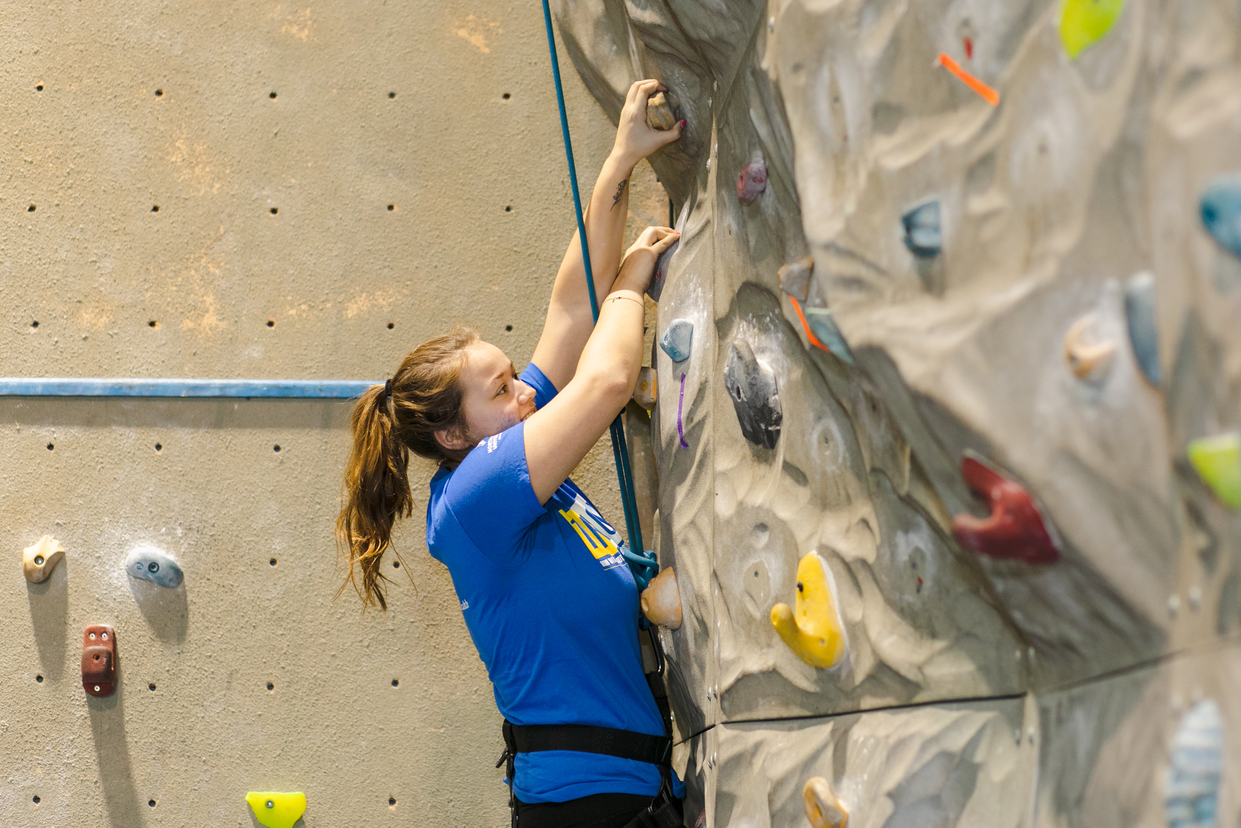Program Requirements
Students who complete the major requirements for a bachelor of arts or bachelor of science degrees in physical education will be prepared for teaching careers. By also completing an education sequence, including three in-classroom teaching experiences, students may qualify for K-12 or secondary teaching certificates.
Major Requirements (BA)
36 sh of major courses:
120 total credit hours for graduation
Prerequisite courses: BIOL 1250 and STAT 1490
Required courses: EXS 1500, 1600, 2700, 3010, 3130 or 3140, 3160, 3700
Electives: (10 sh) any EXS course or others approved by major advisor
Major Requirements (BS)
41 sh of major courses
120 total credit hours for graduation
Prerequisite courses: BIOL 1250 and STAT 1490
Required Courses: EXS 1500, 1600, 2700, 2800, 3000, 3010, 3130, 3140, 3160, 3700; one from EXS 4970 or EDUC 4130
Electives: (0–7 sh) — any EXS course
Notes
Students pursuing teacher certification/licensure must also complete the required education sequence.
Academic Catalog ÌýCore Curriculum
Course Descriptions
The following descriptions are a sample of courses you may take as a physical education major. For a complete list of required courses, please review the academic catalog.
An introductory course giving an overview of physical education including history and principles and a study of organization, administration, and assessment in physical education, exercise science, and sport. Includes the development of a philosophy of physical education.
Study of the dimensions of health and selected health topics with emphasis on how one's behavior affects health.
Introduction to designing physical education programs in pre-K and elementary schools, emphasizing the practical application of key physical education concepts. These include fundamental motor skills and movement concepts, rhythmic movement skills, gymnastic-related skills, game skills, cooperative skills, basic principles of motor skill learning and development, and the history and philosophy of physical education.
Introduction to designing physical education programs for regular and special populations in the secondary schools. Emphasis is on application of curricular models to programming of physical education activities in order to accomplish desired outcomes within an established philosophical framework.
Systematic analysis of human movement. The integrated study of applied anatomy and applied mechanics to the analysis of movement. Movement terminology as well as muscular system function in sport will be studied.
Instruction and practice for teaching basic motor skills related to individual and dual activities to regular and special populations with specific study of rules and equipment required.
Instruction and practice for teaching basic motor skills related to team sports to regular and special populations and specific study of the rules and equipment required.
Study of human physiology with emphasis on the acute and chronic effects of exercise upon the muscular and cardiorespiratory systems. Lecture and lab required. Cross-listed with BIOL 3160.
Class planning and exercise prescription based on test and appraisal results. Teaching group exercise classes and use of exercise equipment is also emphasized.
Includes structure and organization of human organ systems emphasizing skeletal, muscular, digestive, circulatory, respiratory, nervous, and urogenital systems. Lab included with cadaver demonstrations. It is recommened that the student complete one year of high school laboratory science. This course is designed for students majoring in the sciences, healthcare, or nursing.
Introduction to applied statistical analysis. Descriptive, correlational, and inferential statistics; concepts of population, sample, sampling distribution; elements of probability; parameters of discrete distributions; hypothesis testing: analysis of proportions, means, and variance; linear regression. Computer applications required. Cross-listed with MATH 1490.


